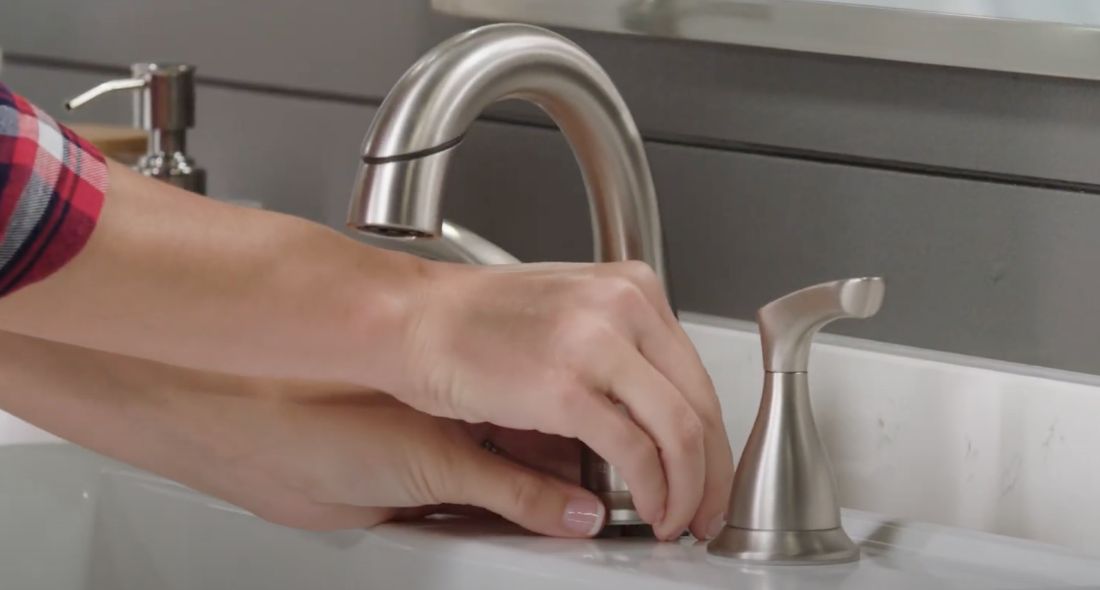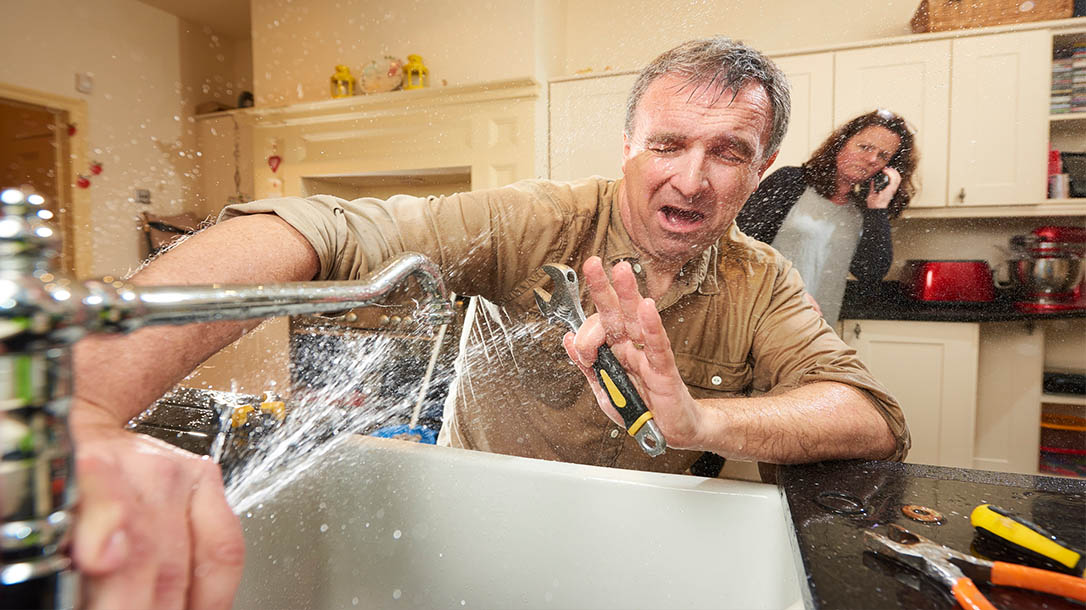When It's Mandatory to Deal with a Broken Faucet
When It's Mandatory to Deal with a Broken Faucet
Blog Article
What are your ideas concerning Why Is It Important To Fix Your Leaking Tap/Faucet??

Leaking taps could feel like a small inconvenience, but their effect exceeds just the nuisance of the audio. From drainage to incurring unnecessary financial costs and wellness threats, overlooking a leaking tap can cause different consequences. In this write-up, we'll look into why it's important to address this usual family concern immediately and efficiently.
Waste of Water
Environmental Influence
Dripping taps contribute dramatically to water wastage. According to the Epa (EPA), a single tap dripping at one drip per second can throw away more than 3,000 gallons of water per year. This not only pressures water resources however additionally affects environments and wild animals dependent on them.
Financial Prices
Boosted Water Bills
Past the ecological impact, leaking faucets can pump up water bills significantly. The accumulated waste over time equates right into higher utility costs, which can have been stayed clear of with timely fixings.
Possible Home Damage
Furthermore, extended dripping can cause damage to components and surface areas bordering the tap. Water build-up can trigger staining, deterioration, and also structural problems if left unattended, resulting in added repair service costs.
Wellness Worries
Mold And Mildew and Mildew Development
The constant visibility of wetness from a trickling faucet creates an ideal atmosphere for mold and mildew development. These fungi not just jeopardize interior air quality however additionally pose health and wellness risks, specifically for people with respiratory problems or allergic reactions.
Waterborne Diseases
Stagnant water in leaking taps can come to be a breeding ground for bacteria and other microorganisms, increasing the risk of waterborne illness. Pollutants such as Legionella germs prosper in stagnant water, potentially causing severe illnesses when consumed or breathed in.
DIY vs. Specialist Repair
Benefits and drawbacks of Do It Yourself Fixing
While some may attempt to deal with a dripping faucet themselves, DIY fixings include their own collection of obstacles. Without proper knowledge and tools, DIY efforts can exacerbate the issue or result in incomplete repair services, extending the issue.
Advantages of Employing an Expert Plumber
Employing an expert plumber makes sure that the underlying cause of the leaking tap is attended to efficiently. Plumbing technicians possess the proficiency and tools to detect and repair faucet problems successfully, conserving time and minimizing the danger of additional damage.
Step-by-Step Overview to Dealing With a Dripping Tap
Devices Called for
Prior to trying to fix a dripping tap, collect the essential devices, consisting of a flexible wrench, screwdrivers, replacement components (such as washing machines or cartridges), and plumber's tape.
Usual Tap Issues and Their Solutions
Determine the type of tap and the details problem triggering the drip. Common troubles consist of worn-out washers, corroded shutoff seats, or defective O-rings. Refer to supplier directions or online tutorials for detailed assistance on repairs.
Safety nets
Routine Maintenance Tips
To stop leaking faucets, execute routine upkeep such as cleansing aerators, inspecting for leaks, and replacing worn-out parts promptly. Additionally, consider installing water-saving devices or upgrading to much more reliable components.
Value of Prompt Repair Works
Attending to leaking faucets as quickly as they're observed avoids further water wastefulness and possible damage, ultimately conserving both water and money in the long run.
Impact on Residential Or Commercial Property Value
Understanding of Well-Maintained Home
Maintaining a property in good condition, consisting of addressing upkeep issues like leaking taps, enhances its viewed worth and worth among potential purchasers or renters.
Influence on Resale Worth
Features with properly maintained plumbing components, including taps, command higher resale worths in the realty market. Dealing with dripping faucets can add to a positive impact during property examinations and settlements.
Ecological Responsibility
Private Payment to Preservation
Taking responsibility for taking care of trickling faucets aligns with wider initiatives towards water preservation and environmental sustainability. Every individual's actions collectively make a considerable influence on maintaining priceless sources.
Lasting Living Practices
By focusing on punctual fixings and taking on water-saving behaviors, people add to sustainable living methods that profit both present and future generations.
Final thought
Dealing with a dripping tap exceeds simple benefit; it's an important step towards saving water, reducing economic costs, and guarding health and wellness and home. Whether through do it yourself repairs or specialist help, taking action to take care of dripping taps is a small yet impactful method to advertise responsible stewardship of resources and contribute to a much healthier, more sustainable future.
How to Fix a Dripping or Leaky Faucet
A leaking faucet is one of the most common problems that homeowners encounter, but it being commonplace doesn’t make it any less annoying. The constant drip drip drip of a leaking bathtub faucet, showerhead, or sink tap can disturb your home’s serenity. Left neglected, a dripping faucet can also result in higher water bills and discoloration or mold growth in your sink or plumbing fixtures.
Fortunately, you don’t have to be a trained plumber to know how to stop a dripping faucet. With some basic tools, replacement parts, and a little patience, leaky faucet repair is a breeze. In this article, we’ll explain what causes dripping faucets and how you can fix them.
What Causes a Leaking Faucet?
Kitchen and bathroom faucets come in all manner of designs, but most involve some combination of valves, O-rings, seals, and washers. The O-ring is usually the weakest link, but any one of these pieces can wear down over time. Heat, moisture, temperature fluctuations, minerals, mold, and movement can contribute to warping and corrosion, breaking the watertight seal. This just comes with the territory of being a homeowner. Everything is always subject to wear and tear, and some component parts of your appliances and fixtures need to be replaced on occasion. At least replacement O-rings are cheap!
More rarely, dripping faucets can be a symptom of excessively high water pressure. Were this the case in your home, you would probably notice that the leak is not isolated to one faucet. Water pressure issues are harder to resolve on your own. We recommend contacting a professional plumber if you suspect your water pressure is too high.
How to Fix a Dripping Faucet
Pipe wrench or monkey wrench Allen wrench set Screwdrivers Old towel or rag Shut off the water.
Before you do anything, you need to turn off the water to keep from drenching your kitchen or bathroom. You should find a valve under the sink and against the wall. Once you’ve turned this valve, try turning the faucet on to confirm that the water source has been cut off.
If you can’t locate your local valve for the faucet you’re working on, you can always shut off the water to the house at the main valve. Of course, this will prohibit anyone from using the sinks, showers, or toilets while you’re working on the faucet that’s giving you trouble.
Plug or block the drain.
You’ll be disassembling the faucet and removing some small bits of hardware. Plug the drain with a stopper or rag to avoid the possibility of a small screw falling into your P-trap.
Take apart the faucet assembly.
There are several varieties of kitchen and bathroom faucets, each with its own manner of assembly. For detailed instructions on how to disassemble your faucet, you can refer to the fixture’s manual or contact the manufacturer. If you know whether you have a ball, disc, cartridge, or compression faucet, you can find detailed schematics online.
In general, you need to begin by removing the faucet handles. You might notice a small screw that you’ll need to remove with a screwdriver or Allen wrench. If you don’t see any visible securing hardware, it’s likely hidden under a decorative cap that can be unscrewed or popped off with flathead screwdriver.
Remove each piece methodically, consulting a schematic when necessary. Take notes or arrange the pieces in such a way to make it easier to correctly reassemble the faucet later.
Remove the cartridge.
Once you’ve removed the handles and securing hardware, you should be able to remove the valve cartridge or stem. Some cartridges will slide right out. Other faucet models will require you to loosen a nut with a pipe wrench before you can remove the valve stem.
Examine the exposed hardware.
With the cartridge or stem removed, inspect the component parts. Check the rubber O-rings for wear and tear. Also examine the seat washer for corrosion or other damage. These pieces are usually the responsible parties for a dripping faucet, but it’s worth inspecting the other component parts while you have the faucet disassembled.
Find replacement parts.
Once you’ve identified which faucet component has failed, find an identical replacement. Your local hardware store should have O-rings, seat washers, and other standard components in stock. If you have a luxury or uncommon faucet, you may have to contact the manufacturer for a replacement part.
It’s a good idea to take your old parts with you to the hardware store so you can compare them with the store’s inventory and be sure you’re purchasing the correct replacement.
Reassemble the faucet.
With your new parts in hand, reconstruct the faucet and handles. Don’t be tempted to overtighten screws or nuts. You might think this could create a better seal, but it can instead damage or bend a delicate part of the assembly and create a new problem for you.
Turn on the water and test the faucet.
The only thing left to do is test your work. Unplug the sink, turn the water back on, and try the faucet. Congratulate yourself on a job well done!
https://www.libertyhomeguard.com/how-to-fix-a-dripping-or-leaky-faucet/

Do you appreciate reading up on What Causes Leaky Faucets & How To Fix Them? Give a comment directly below. We would be delighted to listen to your feelings about this write-up. In hopes to see you back again in the near future. In case you liked our article please consider to share it. Many thanks for your time spent reading it.
Report this page